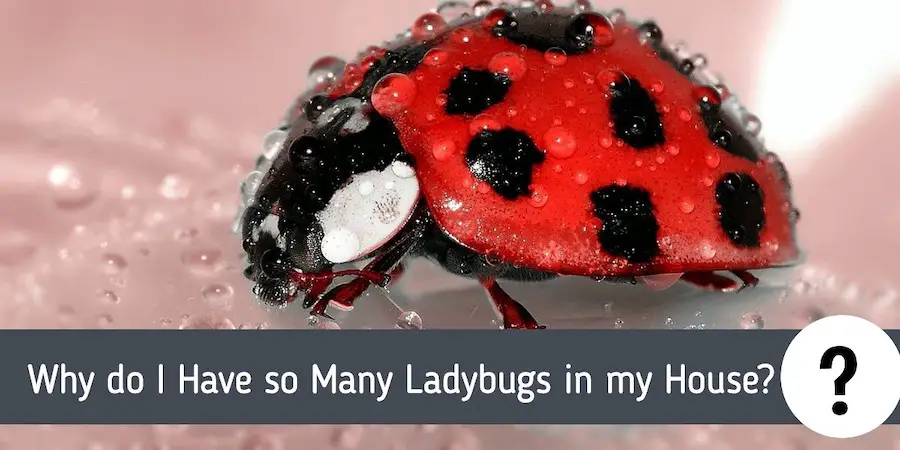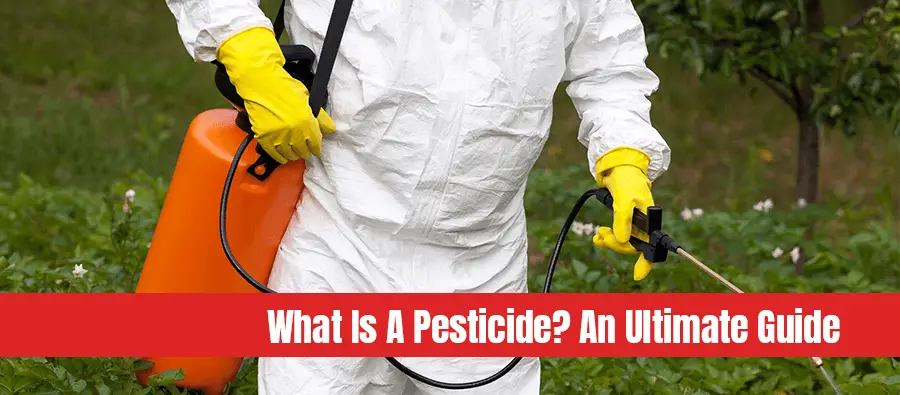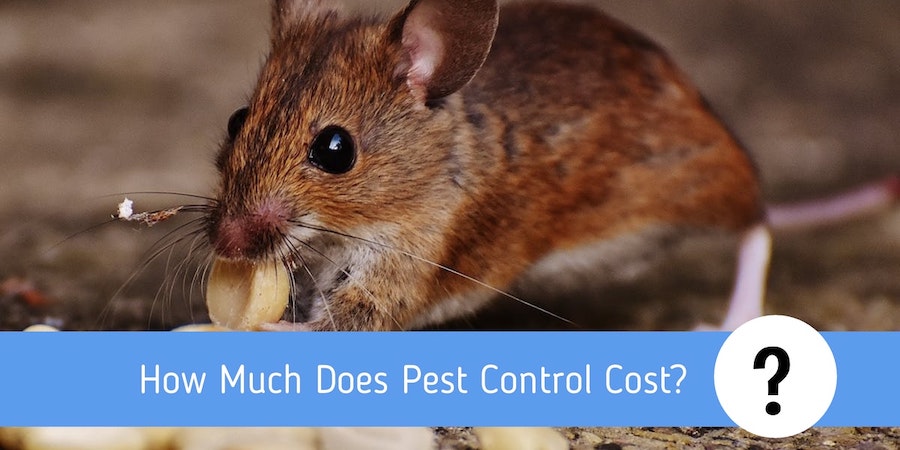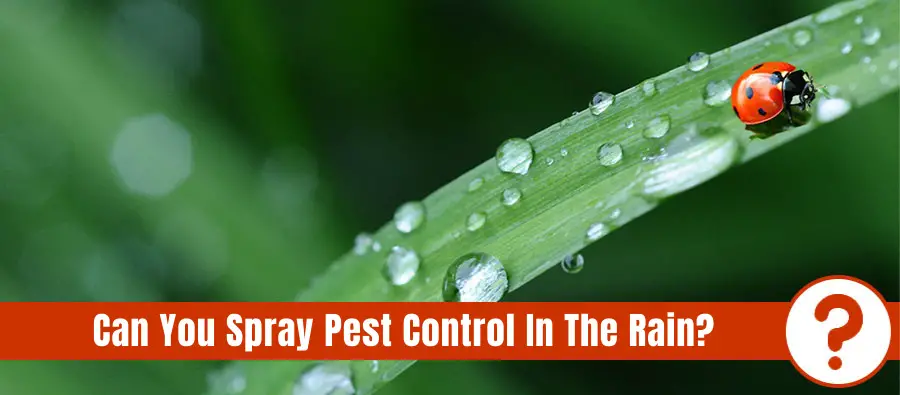Everywhere you look, you find more & more ladybugs in your house! You may not exactly think of ladybugs as being pests like cockroaches or flies, but you also don’t want your home filled with them. Ladybugs can be found in many places, and they will even decide to use your home to hibernate if it is cold outside.
So, why do you have so many ladybugs in your house? Ladybugs are more likely to be attracted to warm houses. Also, the presence of existing ladybugs will attract more ladybugs. Aphids will also attract ladybugs as a food source. Ladybugs tend to be attracted to light-colored houses. Fortunately, ladybugs will not cause any damage to your home.
want to Skip All the Research? Then Hire a Decent Exterminator In your Area!
Check out our exterminator search tool where you will receive free quotes from thoroughly vetted exterminators in your local area!
Table of Contents
What Attracts Ladybugs to Your Home?
Spring has finally come, and you notice that you see ladybugs everywhere you look including inside your home. However, you certainly don’t want to share your home with an infestation of ladybugs! This has got you wondering what attracted so many ladybugs to your home in the first place? After all, realizing why they’re there will help you rid yourself of them.
Many people do not think of ladybugs explicitly as pests. Some people even see them as beneficial, or a sign of good luck. This is especially true if you have spiritual or religious beliefs about nature which include seeing some bugs as a positive sign.
But I have a lot of people asking me how they can get rid of large ladybug infestations in their homes. Clearly, not everyone appreciates large numbers of these small, Asian beetles. Especially since some people are actually allergic to ladybugs.
And like many pests, seeing just a few ladybugs in your home may indicate that you have many more that you can’t see. In the winter, they will come into your house and hide in the walls. When the weather warms up, then you will see them crawling out into your home. So if you have seen about a dozen ladybugs, you may actually have a hundred!
#1 Light-colored Houses Might Get More Ladybugs
Having a light-colored house may be a big reason why you see so many ladybugs inside. Light colors are very likely to attract ladybugs to set up in your home. Unfortunately, there is often very little that homeowners can do about this.
After all, it is simply not practical to change expensive features on the exterior of your home just to ward off ladybugs. But if you can afford to paint your house a darker color, and you are willing to do this, you may reduce your indoor ladybug population.
#2 Ladybugs Prefer a Warm House
Ladybugs are more likely to be found in relatively warm homes than in cold ones. This is also why you are more likely to see them in the spring and summer. However, ladybugs may hide in your walls during cold months, and then emerge out into the rest of the house when it becomes warm. You may see more ladybugs if you live in a naturally warmer climate such as Florida or a country south of the equator.
If you live in a warm climate where you see a lot of ladybugs, you may want to take as many precautions as possible. Remove plants that attract ladybugs to your home, paint your home a darker color, seal up all cracks, and take care of any aphid problems. This way, you will avoid a massive infestation before it even happens.
#3 Ladybugs Attract More of Their Kind
Ladybugs release pheromones that attract other ladybugs to seek them out. This means that once you have a few ladybugs, the number may only continue to increase. In fact, it’s thought that ladybug pheromones are so powerful that they can be detected up to ¼ of a mile away. Ladybug pheromones can last in your home for up to a year!
This means that a year after getting rid of the existing ladybugs in your home, new ones may still be attracted by the pheromones. Cleaning your home thoroughly to remove the scent of ladybug pheromones will go a long way toward keeping them out of your house. You will especially need to clean the yellowish stains that they behind.
#4 Older Houses Are More Susceptible to Ladybugs
Old houses are more likely to have cracks, gaps, and holes where pests can enter through. This means that if your house is old, this may be a factor why you see ladybugs everywhere. This also means that you may have to put some work into sealing and fixing the areas of your home where ladybugs can find a convenient entryway.
If you suspect that ladybugs will come into your home this winter, make sure you begin sealing entrances before you have an infestation. This is still effective if you already have an infestation and you’re trying to prevent existing ladybugs from attracting more of their own kind.
Main things to do:
- Fix holes in broken windows
- Seal cracks with caulk
- Repair torn screens
Don’t be afraid to consult a professional when it comes to sealing up your home. This may be especially important if you have cracks or holes in your roof that may be allowing pests like ladybugs to come inside.
#5 Your Home Might Have An Aphid Problem
You may not realize that ladybugs eat aphids. And if you have a lot of aphids in your home or yard, you may also start to see a lot of ladybugs. Like many pests, ladybugs will be more attracted to areas where they have plenty to eat.
This means, that in order to reduce the number of ladybugs, you will also need to reduce the number of aphids, too. If you don’t, the food supply may just attract more ladybugs in the future.
It’s important to note that if you have an aphid problem, you may want to consider keeping those pesky ladybugs around. At least, you may want to keep them around until your aphid problem is dealt with. Aphids are very destructive to plants and crops, whereas ladybugs do not cause any damage to homes or property. However, this is not advisable if you are allergic to ladybugs.
#6 Certain Plants Attract Ladybugs
If you are an avid gardener, you might not realize that some of the plants in your garden are attracting ladybugs to come to your home. And once they are in your garden and your yard, they may soon decide to crawl inside your home.
Some of these plants include parsley, cilantro, dill, garlic, geranium, sunflowers, and more. If you have any of these plants in your garden, and you are desperate to get rid of your ladybug problem, you may want to consider getting rid of these specific plants.
What are ladybugs good for?
If your ladybug problem is only outside, or you don’t have large numbers of them, you may want to consider keeping the ladybugs around to keep the local aphid population down.
Do thorough research on the benefits and downsides of keeping ladybugs around. Until then, let’s talk about why you may not want ladybugs around your home and property.
Why are ladybugs bad?
You may be happy to hear that ladybugs will not cause any structural damage in your home. Mostly, they are just pests by their very presence. However, there are some things that you will want to consider if you have a ladybug infestation in your home.
As we’ve talked about before, ladybugs attract more of their own kind. And with the pheromones that they release all over your house, they could be attracting more of their kind long after the initial infestation is gone. That means the longer you go without treating your ladybug infestation, the longer you may be seeing ladybugs in your house.
#1 Ladybugs Can Leave Goo Behind
Ladybugs can leave yellowish stains all over your home and belongings. These stains are actually the blood of the ladybugs. It is common for them to release some of this when they are frightened, which is why you may see these stains on your hands if you pick one of them up.
Wash these stains thoroughly, since they also contain pheromones. This means that they will attract more ladybugs.
Ladybugs will bleed on purpose to ward off predators. But since these stains can attract more ladybugs, you need to wash them as thoroughly as possible. Besides being unsightly and attracting more ladybugs, some people may also be allergic to their bloodstains.
#2 Ladybug Allergies: More Common Than You Think
You may be dismayed to hear that ladybug allergies are now as common as household cat allergies. Typically, people are allergic to the bloodstain that ladybugs leave behind. A person allergic to ladybugs may also have a reaction if the ladybug bites. And yes, ladybugs are capable of biting you. However, they are more likely to resort to bleeding on you than biting you.
If you suspect you may be allergic to ladybugs, see a doctor immediately. And if you have both an allergy and an infestation, take whatever steps you have to in order to get rid of the ladybugs around your home.
In severe cases with an allergy involved, this may mean hiring a professional exterminator. After all, you don’t want an infestation to worsen your health.
#3 Ladybugs as an Invasive Species
Ladybugs are also known as the Asian Lady Beetle because they are technically small beetles. And in countries such as North America, ladybugs are considered an invasive species. This is because these small, red beetles are originally from the continent of Asia.
Ladybugs were originally introduced to countries such as the United States in order to control the population of insects such as aphids. Unfortunately, ladybugs have spread and increased in numbers across many countries that they are not originally native to. It was not known at the time how much the ladybug population would grow, and how invasive they would become.
Originally native to Asia, ladybugs can now be found in many countries across the world. In fact, you can find close to 500 species of ladybugs in North America alone.
8 Natural Ways to Get Rid of Ladybugs
Maybe you want to get rid of your ladybug problem, but you want to do it in a humane, natural way. Fortunately, there are some humane ways that you can keep ladybugs out of your home without killing them, and also without using synthetic chemicals.
Here are some ways you can repel ladybugs naturally.
#1 Make use of a good vacuum cleaner
The best way to get existing ladybugs out of your home is to make use of a good vacuum cleaner. Vacuum them up, take the vacuum bag somewhere far from your home, and release the ladybugs back into the wild.
You may have to vacuum them up several times before you remove a significant number of ladybugs from your home.
#2 Diatomaceous Earth
Diatomaceous Earth makes an excellent natural pesticide for ladybugs and many other forms of pests that may infest your home.
Safer manufactures and sells this bag of Diatomaceous Earth. This bag contains 4 pounds worth of Diatomaceous Earth for you to use both indoors and outdoors.
#3 Use clove and citrus scents
Ladybugs are naturally repelled by clove and citrus scents. You may use these scents in the form of essential oils to repel them away from your home.
#4 The scent of menthol
The scent of menthol also repels ladybugs, so you may be able to use this to your advantage.
#5 Use vinegar to repel ladybugs
If you want to irritate ladybugs into leaving your home, why not try vinegar? Mix a little vinegar in a spray bottle with water, and spray it places around the house where you have seen ladybugs gather.
#6 Ladybugs are repelled by mums
Are you looking to add something to your garden to repel ladybugs? Then consider adding mums, since ladybugs are repelled naturally by them.
#7 Ladybugs are repelled by the smell of bay leaves
Like many bugs, ladybugs are repelled by the smell of bay leaves. This means you should distribute whole bay leaves inside and outside your home to deter ladybugs away. You should especially use bay leaves around the areas of the house where ladybugs tend to gather.
#8 Light Traps
DIY light traps can help you capture the ladybugs, and safely release them far away from your home. You can make one of these by covering a lamp with a funnel and a milk jug. There are many guides online to making successful ladybug light traps.
But if you have a severe infestation of ladybugs, you may want to consider contacting a professional exterminator. This is especially true if someone is living in a home that is allergic to ladybugs. Never delay getting pests out of your home if someone’s health is in danger.
Best Lady Bug Repellants
Now, let’s talk about some products that you can use on your own to keep ladybugs away from your home. Remember, severe infestations may require calling an exterminator instead, especially if someone in the home is allergic.
Harris Asian Lady Beetle & Box Elder Killer
If you want to kill ladybugs in their tracks, then this spray from Harris will do the trick. This spray takes care of both ladybugs and box elders.
This spray is odorless and works by killing ladybugs once the spray has dried. After applied, it will continue to kill ladybugs for up to several weeks afterward. This spray is safely registered with the EPA.
BUGGSLAYER Insecticide Concentrate
This concentrated insecticide is made for outdoor use, and it is made by the BUGGSLAYER company. This spray is water-based, odorless, and it does not leave any stains.
It is specially formulated to get rid of stink bugs, box elders, and ladybugs. You can use this spray outdoors around your house to create a barrier that prevents insects from ever getting inside in the first place.
Spectracide Bag-A-Bug Japanese Beetle Trap
This beetle trap is manufactured by Spectracidey, and it has earned a 4.1 out of 5-star rating on Amazon. This product comes in a pack of 2, and it is an effective, non-toxic way to get rid of ladybugs without pesticide sprays. Simply hang this trap above a window, and it will lure ladybugs in without a way to get out. One of these traps lasts for up to 2 to 4 years at a time. Inside, a non-toxic lure is contained to draw ladybugs inside.
40 pk ALL Insect Traps / Strips / Glue Boards
These all-purpose insect traps will work for many pests including ladybugs. These traps are disposable, and they have a shelf life of around three years. You can easily place them on the floor or in windowsills. These all-purpose glue traps are manufactured by TredNot. These packs come with 40 glue traps included.
Conclusion: Why do I Have so Many Ladybugs in my House?
Now, maybe you have an answer as to why there are so many ladybugs infesting your home. And now you will also know what you have to do in order to get rid of the ladybugs in your house. You even have a few ladybug repellent product recommendations.
At Pest Control FAQ, you will find every answer to every pest control question that you may have. From ladybugs to bed bugs, there is no pest too big or too small that it can not be taken care of, removed, or repelled.
Related Questions
Can you be allergic to ladybugs? Ladybug allergies are surprisingly common. Typically, people are allergic to the yellowish bloodstain that ladybugs leave behind. These allergies may flare up in the winter and spring months. If you have an allergy to ladybugs and find that your house is infested with them, you should consult the services of a professional exterminator. If you may be allergic, avoid touching ladybugs or coming in contact with their blood.
Do ladybugs bite or sting people? Fortunately, ladybugs are relatively harmless to human beings. On occasion, ladybugs may bite human skin when threatened. After bitten by a ladybug, you will notice a small, red mark for a while afterward. Most of the time, ladybugs prefer not to bite humans, and will instead bleed a yellowish stain on the skin meant to ward off predators.
How do I keep pests out of my home? Keeping your home clean and tidy is the best way to keep it pest-free. Make sure you have cracks, gaps, and holes sealed up so that pests don’t have an easy way to enter your home. At the first sign of pests, use effective extermination methods so that an infestation doesn’t become severe. In the instance of a severe infestation, you should strongly consider hiring a professional pest control service.





